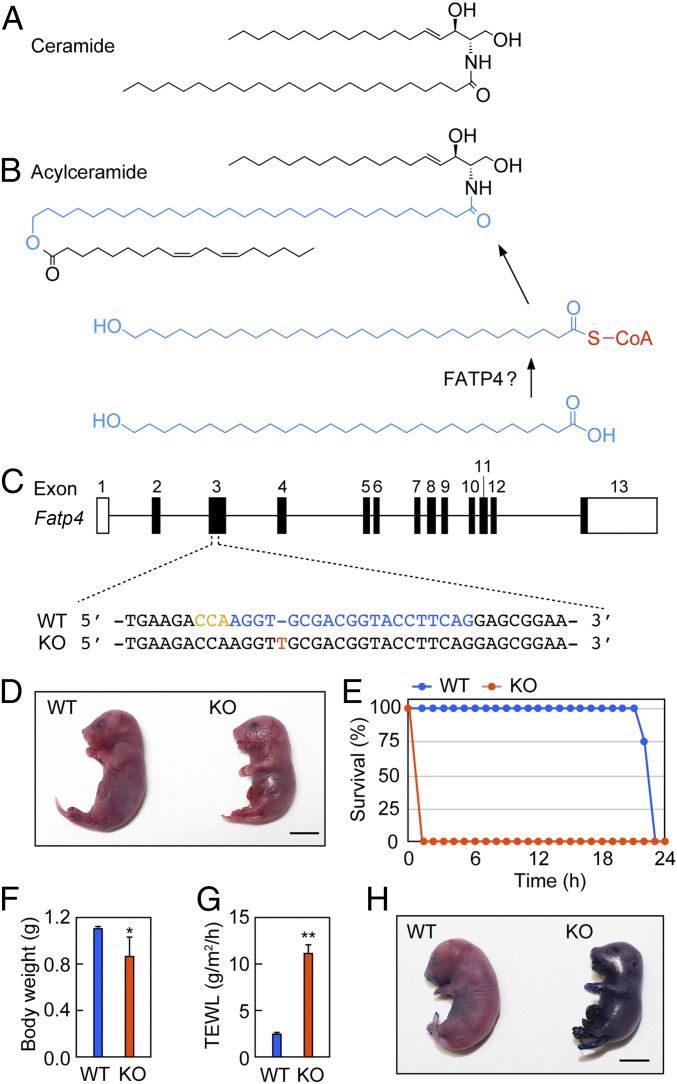Fig. 1.
Skin barrier dysfunction in Fatp4 KO mice. (A) Structure of ceramide. (B) Structure of acylceramide and reactions that introduce ω-OH ULCFA into acylceramide. (C) Genome structure of mouse Fatp4 gene and WT and mutant nucleotide sequences around CRISPR-Cas9 target sequence. The black boxes represent coding sequences. Red, inserted nucleotide in Fatp4 KO mouse; blue, target sequence of the guide RNA; orange, protospacer adjacent motif (PAM) sequence. (D–H) WT and Fatp4 KO mice were prepared by cesarean section at E18.5. (D) Photograph of specimens. (Scale bar, 1 cm.) (E) Measurement of survival rates (WT, n = 4; KO, n = 3). (F) Measurement of body weights (WT, n = 4; KO, n = 4). (G) Measurement of TEWL (WT, n = 4; KO, n = 4). Values represent the means ± SD. Statistically significant differences are indicated (two-tailed Student’s t test; *P < 0.05; **P < 0.01). (H) WT and Fatp4 KO mice were incubated with 0.1% toluidine blue solution for 2 h and photographed. (Scale bar, 1 cm.)

